How to Create a Content Framework That Will Keep You on Track
 Spoiler alert! I know why you’re here. It’s time to build a content framework for your marketing playbook.
Don’t worry, you’re not alone in your search. The amount of content that modern marketers need to create and post is overwhelming.
Today, 70% of marketers are actively investing in content marketing.
Spoiler alert! I know why you’re here. It’s time to build a content framework for your marketing playbook.
Don’t worry, you’re not alone in your search. The amount of content that modern marketers need to create and post is overwhelming.
Today, 70% of marketers are actively investing in content marketing.
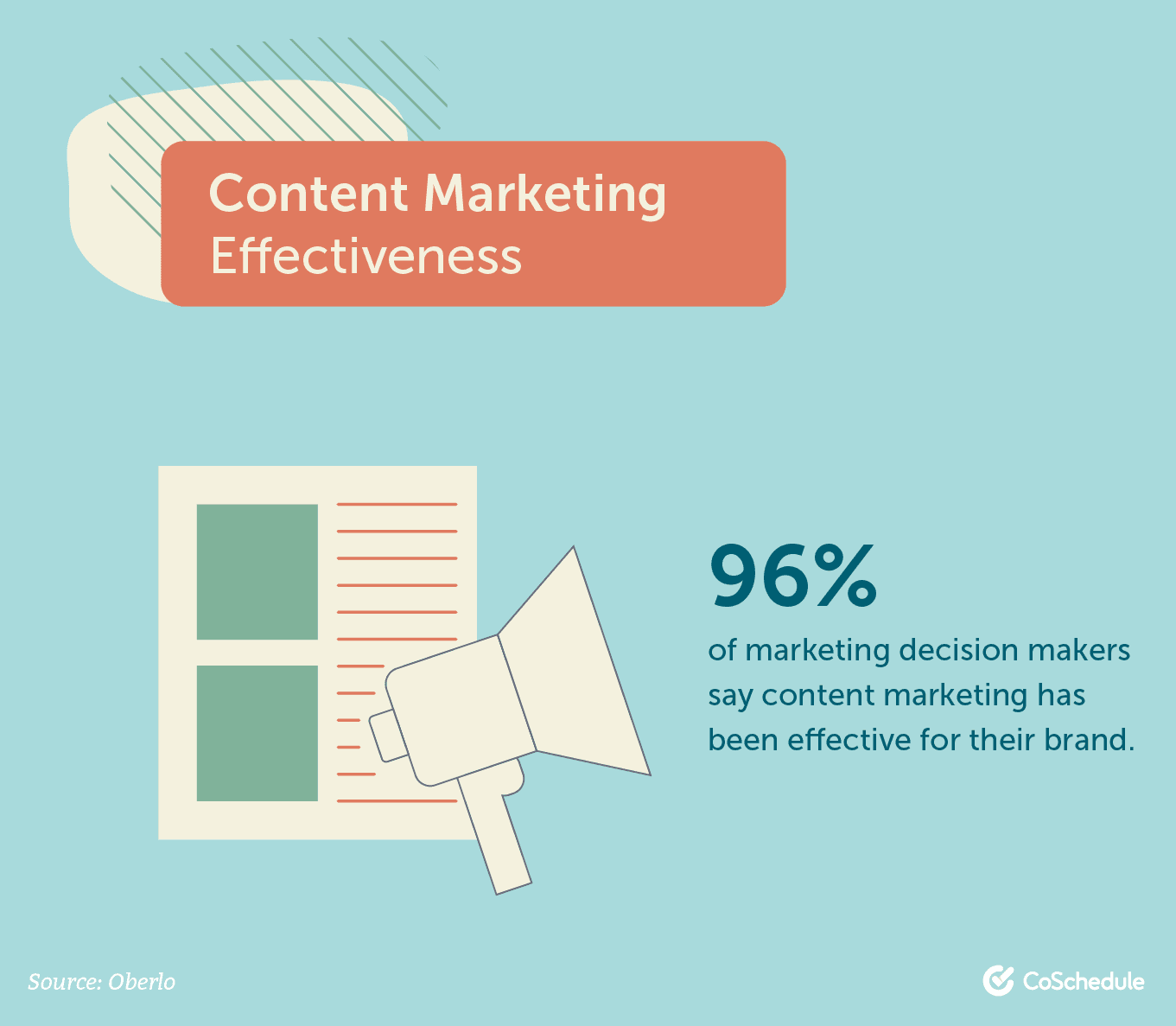 Source
It’s worth the time and effort. But there needs to be a way to standardize the content creation process at scale.
A content framework is a repeatable process that helps you outline a single piece of content while following brand guidelines. In short, it’s a strategy that guarantees consistent, quality content.
In this article, you will get a complete guide on how to establish your editorial guidelines and craft outlines that meet brand expectations every time. In the end, you will be ready to create a framework that supercharges your content production without sacrificing quality.
Let’s get started!
Source
It’s worth the time and effort. But there needs to be a way to standardize the content creation process at scale.
A content framework is a repeatable process that helps you outline a single piece of content while following brand guidelines. In short, it’s a strategy that guarantees consistent, quality content.
In this article, you will get a complete guide on how to establish your editorial guidelines and craft outlines that meet brand expectations every time. In the end, you will be ready to create a framework that supercharges your content production without sacrificing quality.
Let’s get started!
How to Create a Content Framework That Will Keep You on Track
Click To TweetBut First, Claim Your Editorial Calendar Template
With your content framework, you will need a way to plan, schedule, and execute your content creation and distribution. This downloadable editorial calendar will help you plan and execute content easily and effectively.Define Your Editorial Standards and Goals
CoSchedule has established its own editorial guidelines to keep the brand’s content strategy in check. To create your brand’s editorial standards, you need to grasp your organization’s direction and goals. Enter SMART goals.1. Create SMART Goals for Your Content
SMART goals are a marketer’s best friend. They can be used both as strategy-level and article-level editorial rules to keep you on track each time you create content.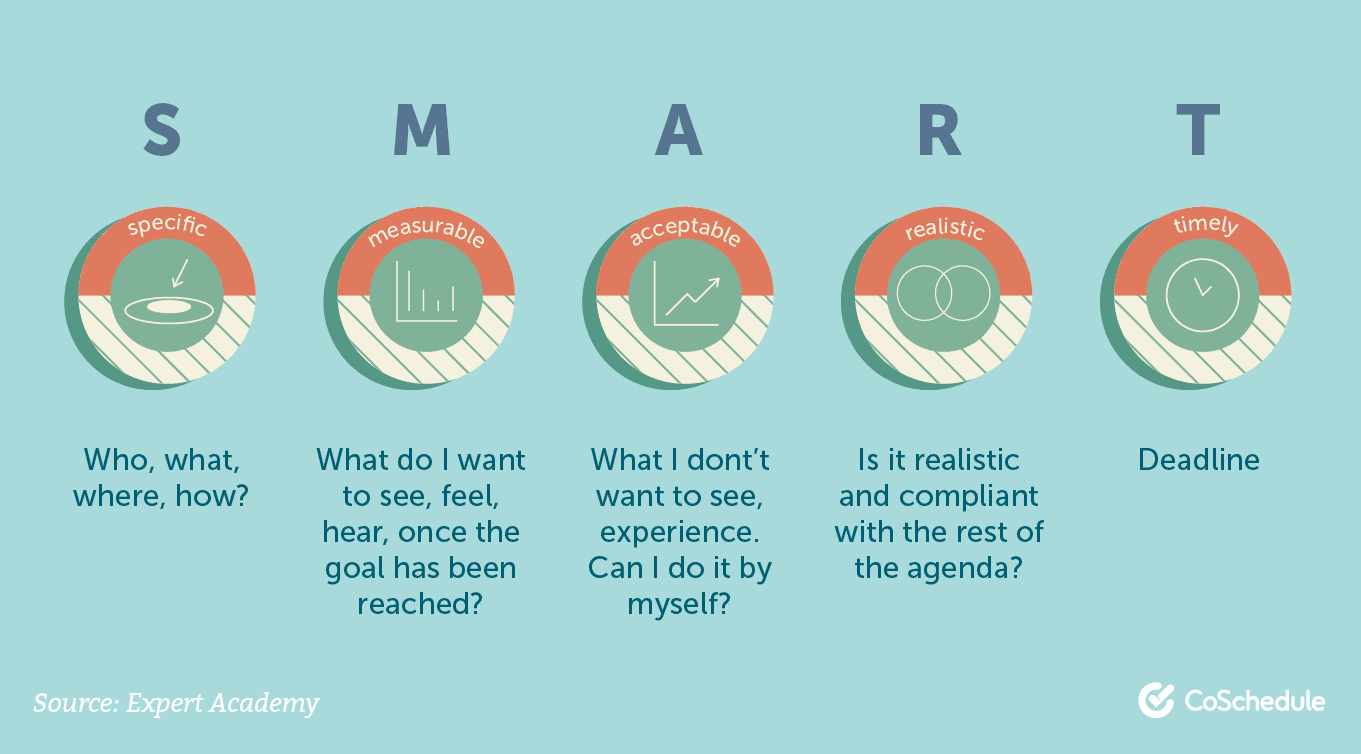 Source
Source
Specific
Clear-cut goals are the most efficient way to achieve growth. Vague ideas like “increase traffic” or “get more sales” do not bind you to a quantifiable commitment. Numbers do. Build your goal around percentages and timeframes. For instance: “increase sales by 10% within the first quarter.” Tip: Marketers with a documented strategy are 313% more likely to report success. But don’t just leave these targets buried in a document. Increase your accountability by introducing a goal-tracking tool into your everyday marketing processes.Measurable
How will you know if your content strategy was a success? What are your KPIs? In its 2020 State of Marketing report, HubSpot asked marketers this very question. These were their high-level performance indicators: Source
Source
Attainable
Establish goals that are attainable by your team within the given timeframe. It’s not an easy task. You will need to find the balance between “possible to achieve” and “makes a sizable difference in the bottom line.”Realistic
Set targets that make sense based on your historical and projected growth. Let’s say you have two marketers on the team. If they can usually produce 6-7 blog posts a month, then set the target at 7 or maybe 8 posts in the content strategy. The goal is not to end up creating 1,000 blog posts every month. The goal is to have a content framework in place that cultivates a consistent if slightly more productive process.Time-Bound
Always set a deadline for your goals. Depending on the strategy, most marketers like to use monthly, quarterly, yearly, or 5-year targets for their marketing efforts.2. Understand Your Audience’s Wants
90% of consumers expect brands to provide content. But what do they want to see? It depends. First, you need to familiarize yourself with your target audience. There could be one or more segments involved. Investigate the main pain points they regularly face and create relevant content that solves these problems. Source
Source
3. Tailor the Right Tone and Voice
This step is directly impacted by the previous one. Knowing your audience well means understanding the tone and voice, too. The modern web has quickly adapted to readers who preferred a more engaging, friendly tone in their content.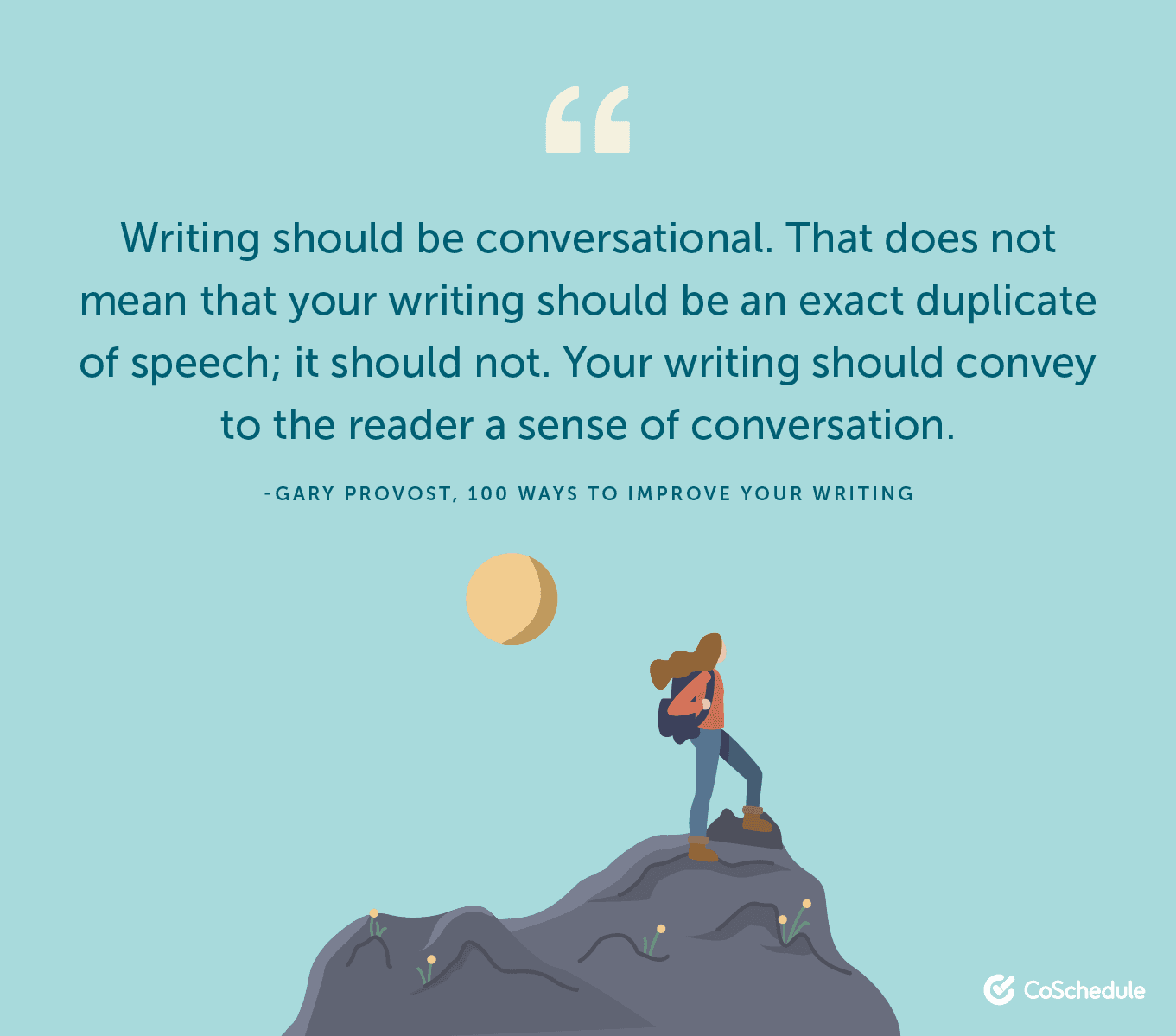 This is especially true on your website and social media, where content may update daily or weekly. Keeping a consistent tone and voice effectively builds brand perception.
For example, the two companies below do the same thing: they hire developers for other companies. The first one caters to startups or CTOs. Its voice is more casual, as the writers are likely aiming to resonate with young professionals in the startup scene.
The second example targets recruiters or possibly enterprise businesses; therefore, its voice is a mix of conventional and conversational.
This is especially true on your website and social media, where content may update daily or weekly. Keeping a consistent tone and voice effectively builds brand perception.
For example, the two companies below do the same thing: they hire developers for other companies. The first one caters to startups or CTOs. Its voice is more casual, as the writers are likely aiming to resonate with young professionals in the startup scene.
The second example targets recruiters or possibly enterprise businesses; therefore, its voice is a mix of conventional and conversational.
 Source / Source
Are you feeling stuck creating your own? Use a tone of voice generator to discover what voice suits your brand the best.
Source / Source
Are you feeling stuck creating your own? Use a tone of voice generator to discover what voice suits your brand the best.
4. Have a Defined Workflow
Every successful content strategy shares one secret: they lean on an effective internal workflow. It is a series of steps that need to be done to complete a project. A thorough content production plan often involves multiple departments and timeframes specific to each stage. The below illustration is an example of a typical content marketing workflow, courtesy of Content Marketing Institute: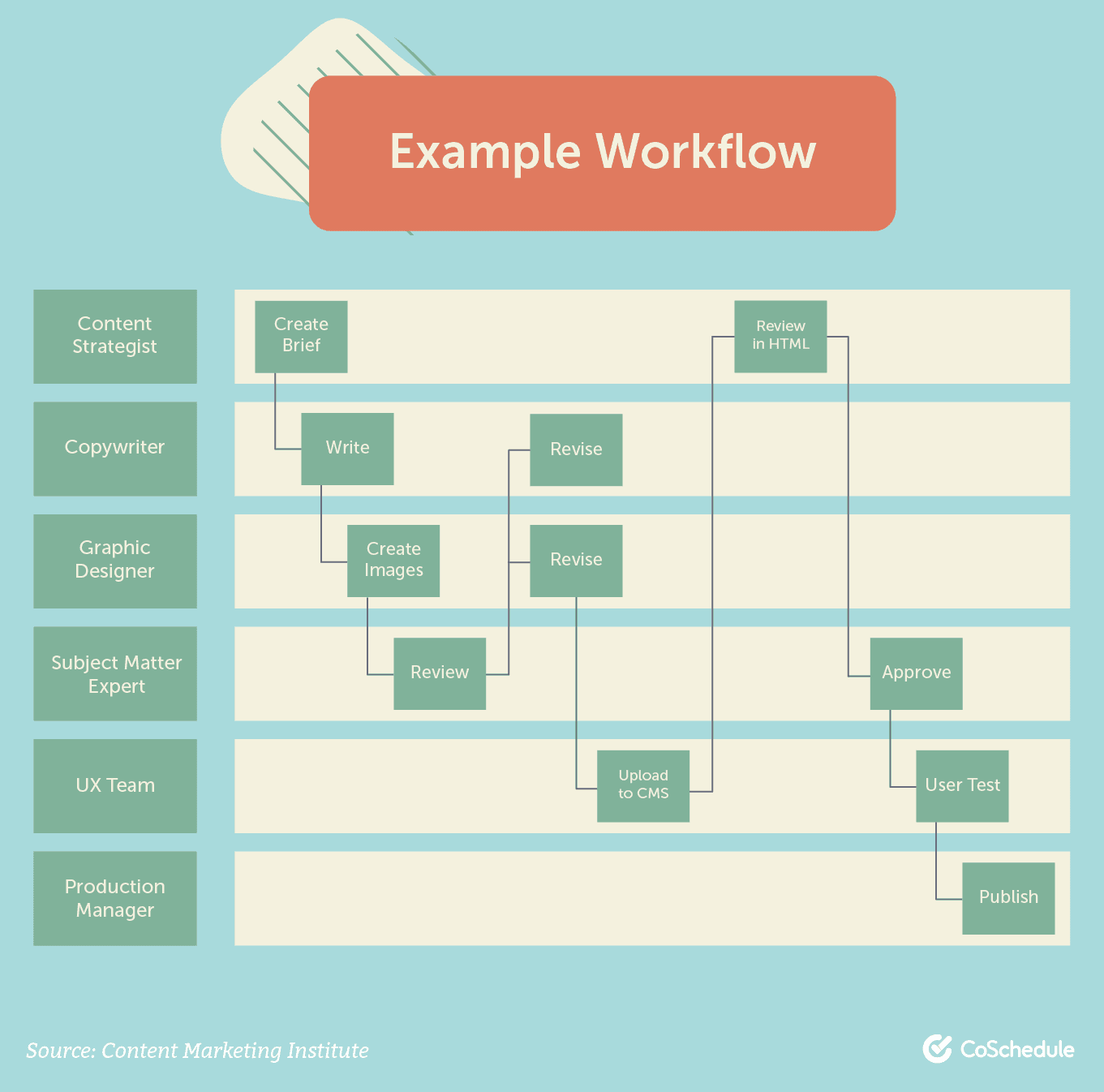 To create your workflow, you’ll need to think of a piece of completed content and break down the steps of how it came together. Work your way back to the beginning. For example:
To create your workflow, you’ll need to think of a piece of completed content and break down the steps of how it came together. Work your way back to the beginning. For example:
Article → Promotion → Publication → Editing → Writing → Design → Ideation → StrategyNow reverse it, add time frames to each step, and you have a workflow!
Creating a Content Framework
Once your content strategy and editorial standards are fully formed, you can start putting together your content framework. This will be a practical blueprint that you can follow when creating content.1. Topic and Headline Ideation
A good headline is like a promise. You promise the reader that the article will be worth their time. And developing that worth is no easy task. Natalie Slyman, the Content and Social Media Manager at Benchmark Email, says, “When creating headlines for your content, it’s important to think of what would make you click through to read the article. Similar to email subject lines, article headlines serve as the gatekeeper, and you have a limited time to get people to click through to read more. It’s crucial that you put together something that inspires action. David Ogilvy, the “Father of Advertising,” said that it took him 26 tries to land one of his most profitable headlines of all time: "At 60 miles an hour, the loudest noise in the new Rolls-Royce comes from the electric clock." First, bring your SEO people to the table. While keyword research may reveal valuable content ideas for your brand, it’s topic discovery that moves the needle. “Tap into your SEO strategy to make sure you’re utilizing keywords that both relate to your article and to topics you want your content to rank for,” Natalie Slyman adds. Below is an impressive example of a 1,000% traffic increase achieved by an SEO expert, Samuel Schmitt. He divided up some of his website’s pages by topics, and this is what happened: Source
Also called topic clusters or topic hubs, this strategy can help you plan your content around key themes. If you were creating content around SEO, then this is what your cluster would look like:
Source
Also called topic clusters or topic hubs, this strategy can help you plan your content around key themes. If you were creating content around SEO, then this is what your cluster would look like:
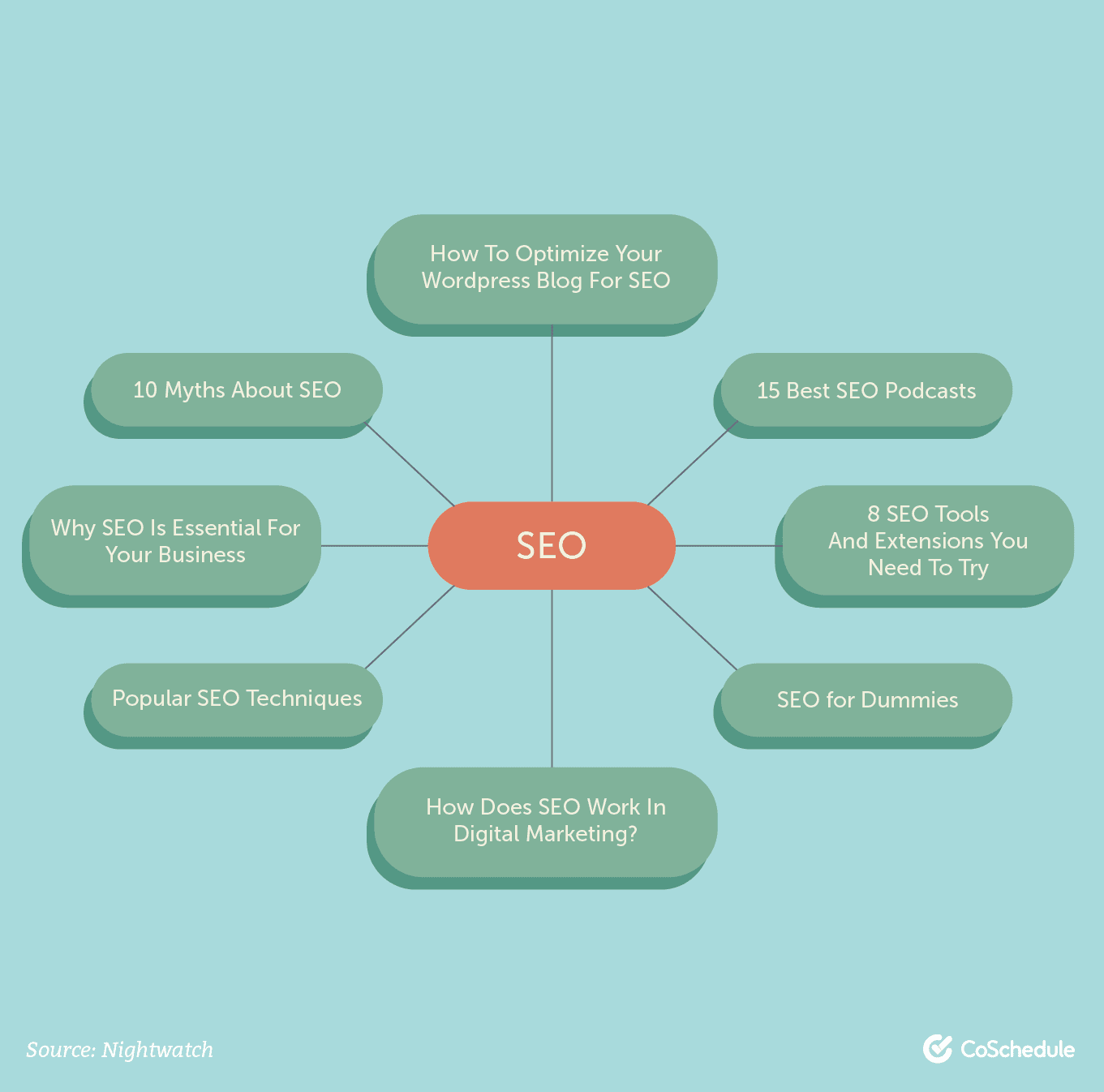 Source
To develop an easy, repeatable process of coming up with topics and headlines, add the following tools and tactics to your framework.
Source
To develop an easy, repeatable process of coming up with topics and headlines, add the following tools and tactics to your framework.
- Check Google Search Console to see what keywords you’re already ranking for. Look for highly searched keywords that are not yet covered on your site.
- Use Answer the Public to grab ideas from Google’s autocomplete data.
- Tap into Google’s massive keyword database via Google Keyword Planner.
- Use mind mapping software to organize your best ideas visually.
- Download CoSchedule’s Headline Studio to help you land on a killer headline.
2. Assign Responsibilities
A team can produce fantastic content together when there are no gray areas regarding responsibilities. Depending on your business and the type of content involved, you can expect to deal with:- Writers
- Editors
- Subject matter experts
- Featured guests
- Translators
- Designers
- Social media marketers
- SEO professionals
- Publishers
- Ensure to assign the right tasks to the right people
- Allocate enough time for each member
- Have one person follow the development of the content (e.g., an article) from start to finish
- Establish rules for what happens if there’s a bottleneck
- Decide on how reporting happens after a piece of content is out (e.g., via Google Analytics)
3. Create the Content
You can make content creation a success every time. Just stick to a solid checklist. The below list assumes that you have already picked a topic and a headline, did keyword research and assigned responsibilities.- Define your angle - How will you approach this topic?
- Conduct competitive analysis - What type of content is everyone else producing?
- Research your topic - Learn everything you can about your topic, from facts to the latest developments.
- Write the outline - What sub-topics will you cover in the article?
- Create an introduction with a powerful hook - Use the APP technique.
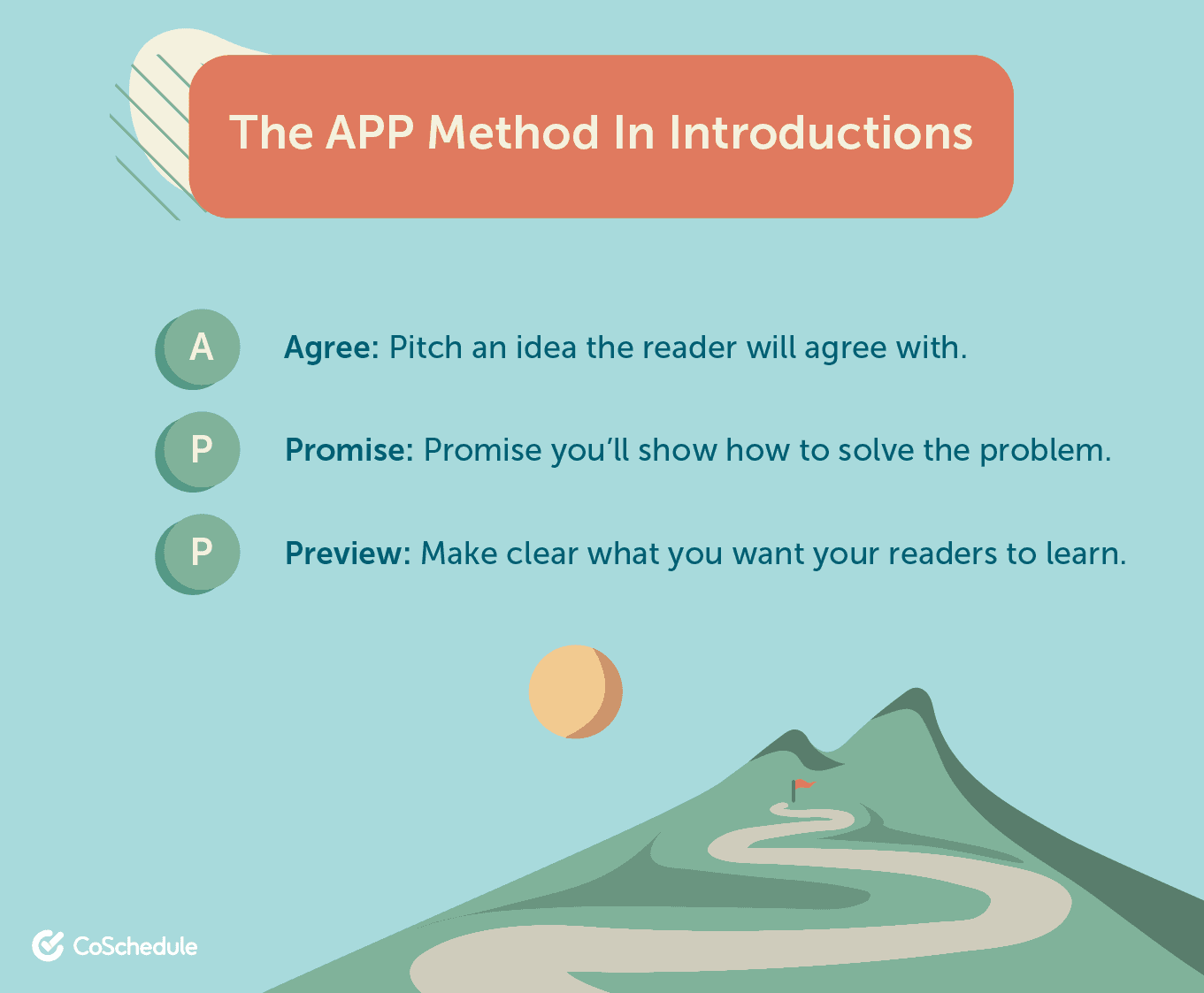
- Write the body copy - Aim to immerse the reader by deconstructing your research with the help of storytelling.
- Add visual content - Relevant images or videos can make great content amazing.
- Find quotes - Brilliant quotes by subject matter experts add value to your post.
- Find statistics - Ensure they are not older than two years to keep it relevant for the readers.
- Add links - Internal or external links can both enhance the information provided.
- Add a powerful call-to-action at the end - Where should visitors go from there?
You can make content creation a success every time, just stick to a solid checklist.
Click To Tweet4. Edit, Edit, Edit
Just when you think you’re ready to publish, you still have one step ahead of you: a thorough overview. If time allows, skip a day between finishing the piece and editing it. This practice helps you look at your writing with a fresh set of eyes. “When editing your content, obviously, grammar and flow are the biggest areas to edit,” Natalie Slyman says. “You want your article to be pleasant to read, straightforward, and align with the tone that fits your brand. Disjointed sentences or paragraphs will leave your readers questioning your authority in the space and whether or not you provide the right quality assurance in other aspects of your operations.” But editing goes beyond just grammar and technical aspects too! Prepare to do three different types of editing in this stage: Copy Editing- Run it through Grammarly to catch any typos or grammar mistakes
- See if the sentences are clear enough
- Ensure no information is missing or left unexplained
- Fact-check your claims
- Add references to the sources you used
- Check if the article’s angle is interesting or new
- Ensure that the logical setup makes sense
- Format the finished content, so it’s easy to read
5. Publishing and Promotion
When ready, upload your article into your CMS. Depending on the size of your team, you may have a designated person for this task. You can use this step to do a last-minute SEO review, too. If your website is WordPress, get a plugin that checks the placements of the target keywords for you. This can include backlink checks too. “You can’t hit it out of the park every time, but consider search phrases when you add or edit links within your articles. Optimizing for SEO is important, but you’re also writing your content for human beings to engage with,” suggests Natalie Slyman. Pro-tip: Make sure your website name is representative of your brand’s content! It’ll help rank you better when your audience searches for you too. The only thing left? Hit publish. Next, get your editorial calendar ready! Even though organic search might drive 1,000% more traffic than social media, it’s still crucial to utilize all of your content promotion channels. For example, blog posts that don’t get many clicks can still add value to your content strategy. How? They will still generate some brand awareness among potential customers. Marketers surveyed in the 2019 State of Content Marketing report (see below) agreed that there could be various goals at play during content distribution.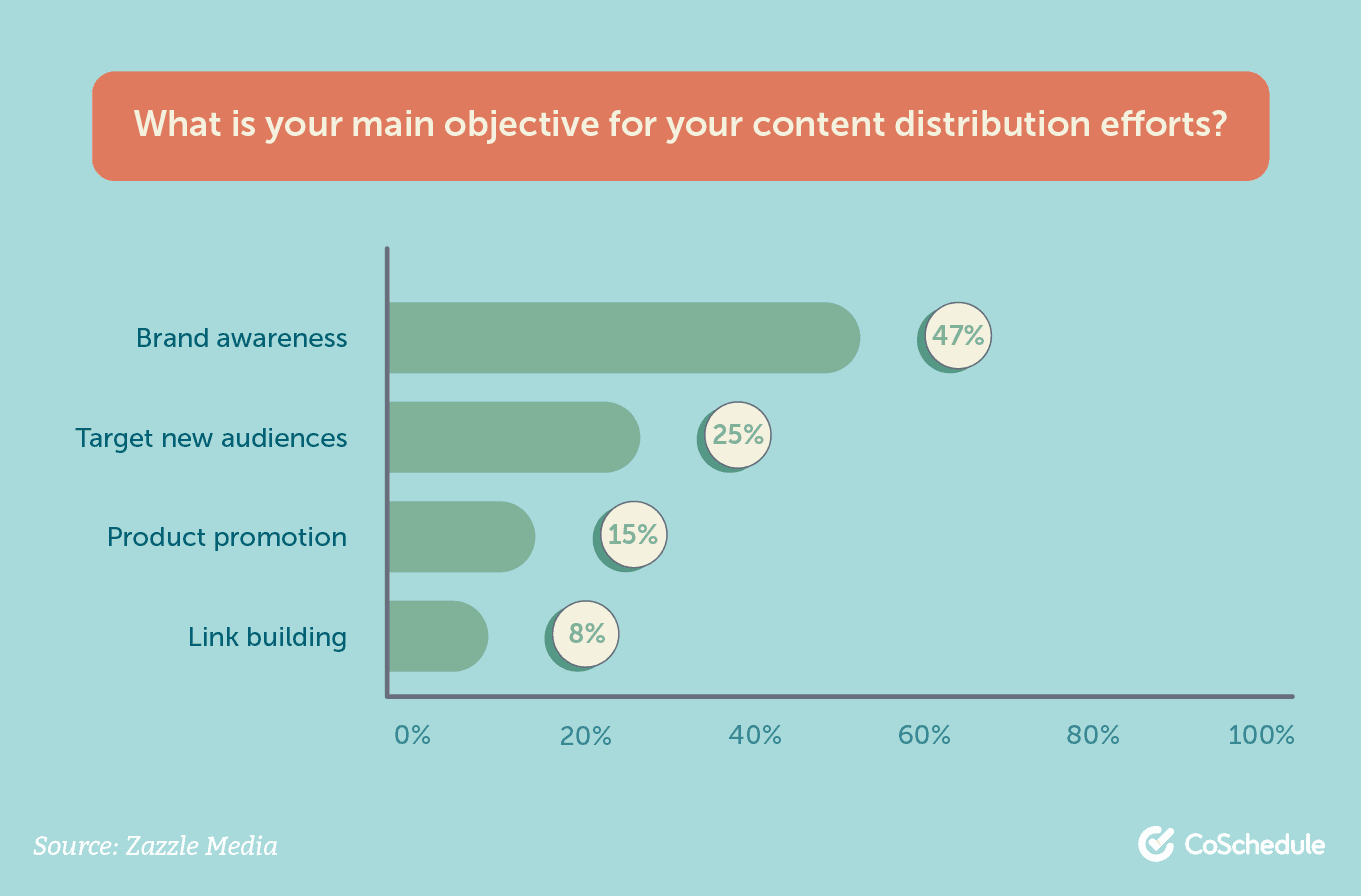 Source
Create a promotional plan and add it to your framework with the following elements:
Source
Create a promotional plan and add it to your framework with the following elements:
- Email marketing - share your content with your email list for an instant influx of readers.
- Social media marketing - create a social media calendar and schedule a few posts for launch day, then a few more for later dates.
- Paid marketing - create banners and share on paid search or paid social channels.
- Events - host a webinar or share the content at conferences.
- Podcasting - plug the content on your podcast.
- Influencer marketing - get your network of influencers to share your content with their readers.
- On-page marketing - ensure that your share buttons work. You can also add a relevant pop-up to other pages.
 Source
Source


